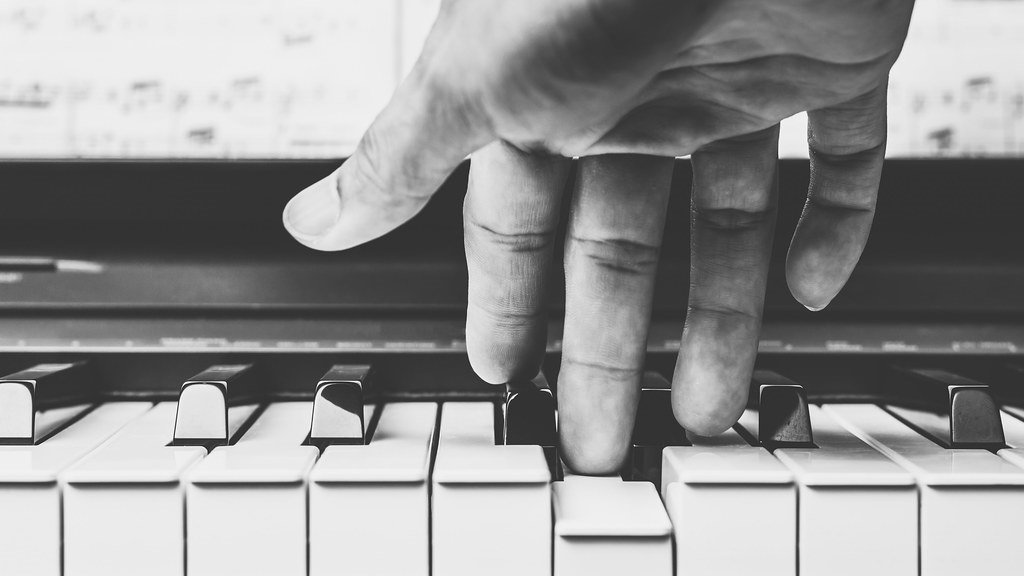
27 Dec How to Play the D# Piano Chord: A Complete Beginner’s Guide
Learning to play piano chords can seem intimidating at first, but with some basic music theory and chord construction knowledge, you’ll be playing the D# chord in no time. This comprehensive guide will walk you through everything you need to know, from identifying the notes in the chord to mastering voicings and inversions. With helpful illustrations, tips, and practice strategies, you’ll gain the skills and confidence to incorporate the D# piano chord into your piano playing.
What is the D# Piano Chord?
The D# chord is a major triad chord (a chord made up of three notes) built on the note D#. It consists of the notes D#, F##, and A#.
On the piano, the D# chord is played by striking the D# key along with the F## and A# keys simultaneously. The D# chord is considered a basic triad chord and is one of the most commonly used chords in Western music.
Understanding some basic music theory will help you grasp chords more easily. Here’s a quick overview:
- The musical alphabet consists of A, B, C, D, E, F, and G.
- The # symbol means to raise a note by one semi-tone or half-step. For example, D# is one semi-tone higher than D.
- Triad chords are made up of the root note plus the third and fifth notes above the root. The D# triad contains:
- D# – the root note
- F## – the third note
- A# – the fifth note
Now that you know the structure and notes that make up a D# chord, let’s look at how to play it on the piano.
How to Play the D# Major Chord on Piano
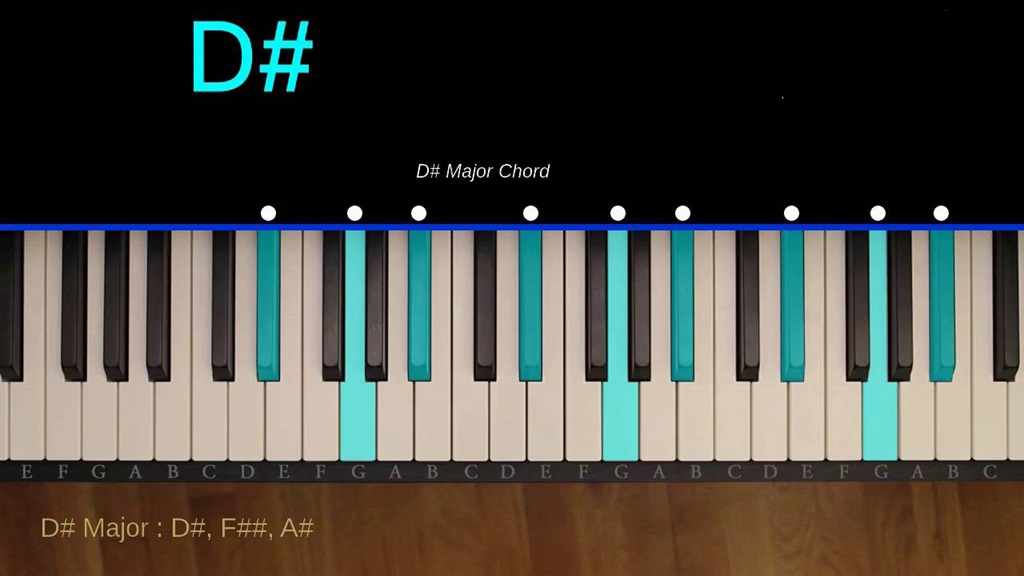
Playing a D# major triad chord on the piano is straightforward once you know the notes involved. Here are two easy ways to play the chord:
1. D#, F##, and A# in the Right Hand
To play a basic D# chord, use your right hand to play the notes D#, F##, and A# all at once. On an 88-key piano, you’ll find these notes here:
- D# – 2nd key from the left on the bottom row
- F## – 2nd key from the right on the bottom row
- A# – Middle C key
Press these keys simultaneously to play the chord. Make sure your hand and fingers are rounded and relaxed as you play the notes together.
2. D# and A# in Left Hand, F## in Right Hand
You can also split the chord between your left and right hands. Play the root note D# and fifth note A# together with your left hand. Then add the F## note with your right hand.
On the piano, play:
Left hand:
- D# – 2nd key from the left on the bottom row
- A# – Middle C key
Right hand:
- F## – 2nd key from the right on the bottom row
Either fingering will accurately play a D# major chord. Getting comfortable playing the chord both ways builds dexterity in both hands.
Tips for Playing the D# Piano Chord
Here are some tips to help you master the D# chord on piano:
- Play the notes slowly and deliberately at first. Focus on striking the keys simultaneously.
- Listen carefully to the sound. A D# major chord has a bright, vibrant quality.
- Make sure your fingers and wrists are relaxed, not tense. Good posture helps.
- Try playing just the bottom three notes of the chord (D#, F#, A#) to simplify it at first.
- Say the note names aloud as you play them. This reinforces their place in the chord.
- Practice moving between D# major and other chords, like G# or A major. This helps chord changing fluidity.
- Use alternate fingering options to find the most comfortable way to play the chord for your hands.
- Play root position D# chords up and down the keyboard using octave transfers to improve chord dexterity.
With regular practice playing the notes together, the D# chord shape will soon become familiar under your fingers. Take it slowly and be patient with yourself as you learn proper piano technique.
Inverting the D# Chord
Beyond the basic root position D# chord, inversions open up additional options for using this chord. Chord inversions rearrange the order of the notes, but keep the same overall harmonic character.
There are two simple inversions for the D# major triad:
First Inversion
The first inversion of a D# chord has the notes arranged F## – A# – D# (from bottom to top).
To play the F## is in the bass:
Left hand:
- F## – 2nd key from right on bottom row
Right hand:
- A# – Middle C
- D# – 2nd key from left on bottom row
This inversion puts the third (F##) of the chord as the lowest note, with the root and fifth above it. The chord retains its major sound.
Second Inversion
The second inversion of a D# triad has the notes ordered A# – D# – F## (from bottom to top).
To play the A# in the bass:
Left hand:
- A# – Middle C
Right hand:
- D# – 2nd key from left on bottom row
- F## – 2nd key from right on bottom row
Here the fifth (A#) is the lowest note with the root and third stacked above.
Inversions add variety and flexibility when playing the D# chord. Practicing them also reinforces your understanding of chord construction.
Common Chord Progressions with D#
Learning how chords work together in progressions is an important piano skill. Here are some common progressions that use the D# major chord:
- D# – G#m – A – Fm
- D# – A#m- B – G#
- D# – G# – A – B
- D# – Fm – G# – A
- D# – E – F# – G#
Being able to smoothly transition between chords while maintaining rhythm takes practice. Start slowly with a simple I-IV-V-I progression like D#-G#-A-D# and increase speed as it becomes more comfortable.
Listen closely to the chord qualities as you play through progressions. The D# major will stand out with its vibrant tone. Knowing how chords relate harmonically in a progression will make you a better pianist.
The D# Chord in Popular Music
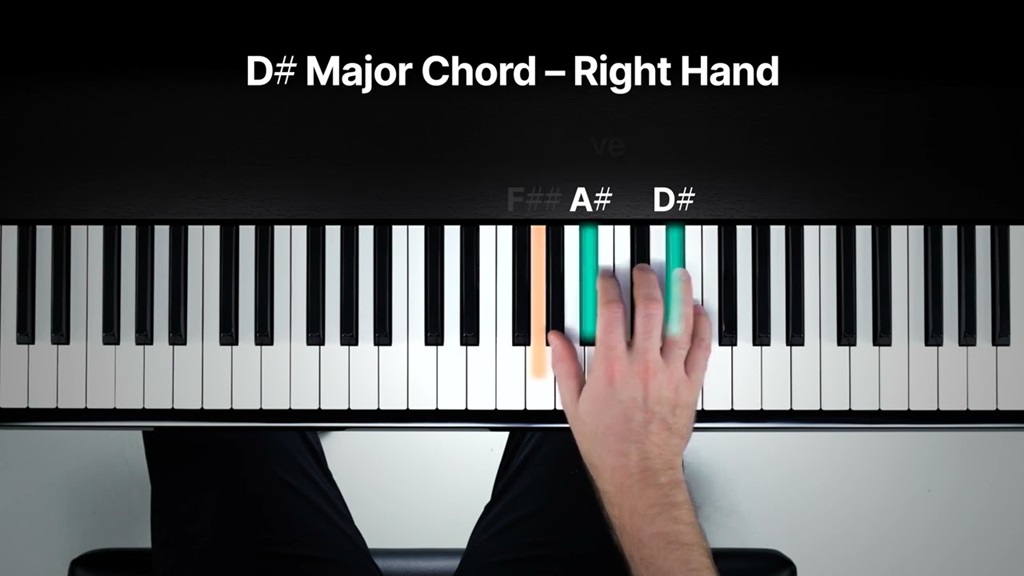
The versatile D# chord appears in many popular songs across genres. Recognizing its sound in hit tunes can help cement your understanding of this useful chord. Listen for the D# chord in these examples:
- “Tears in Heaven” by Eric Clapton – The opening sequence moves D# – F#m – B – A
- “Someday My Prince Will Come” from Snow White – Jazz standard with several D# chords
- “Hallelujah” by Leonard Cohen – Uses D#major as a transition chord in the well-known progression
- “Unchained Melody” by The Righteous Brothers – D# is interspersed throughout this 50’s classic
- “Moondance” by Van Morrison – D#7 resolves to Emaj7 as a key change in the bridge
There are countless other pop, rock, blues and jazz songs that apply the bright D# chord. Learning songs with chords you’re practicing reinforces muscle memory and helps build intuitive familiarity.
Tips for Mastering the D# Chord
Learning new chords takes focused practice and repetition. Here are some useful tips to help you master the D# chord on piano:
- Set aside regular time each day to focus just on the D# chord. Consistency is key.
- Utilize exercises like playing the chord up and down the keyboard using octave transfers to gain comfort.
- Slow it down. If you struggle changing between D# and other chords smoothly, slow the progression way down.
- Watch your finger and hand positioning. Keep wrists loose and avoid tension.
- Say note names aloud as you play them. Reinforce the auditory component.
- Use a metronome and start very slowly. Increase the speed incrementally as your accuracy improves.
- Record yourself playing the chord progression. Listen back critically and objectively.
- Practice all chord inversions, not just root position. This builds flexibility.
- Analyze songs that use the D# chord. Understanding its role will inform your practice.
Remember to be patient with yourself. Learning new skills takes time. But with regular, mindful practice, playing the D# chord will soon become natural and you’ll be ready to use it confidently in any song or progression.
Expanding Beyond the D# Major Triad
As you get comfortable with the D# major triad, you can continue expanding your use of the D# chord by exploring chord extensions. Extensions add additional color tones beyond the basic triad.
Here are some common extended D# chords to try:
- D#maj7 – Adds the 7th note (C#) to a D# chord. This creates a jazzy, dreamy sound.
- D#7 – The dominant 7th chord lowers the 7th note to C natural, adding nice tension. Very common in blues music.
- D#m7 – A minor 7th chord uses a flattened 3rd (F#) along with the ♭7 (C). Creates a melancholy minor sound.
- D#6 – Includes both the major 3rd and 6th note (B#). Brings a bright, upbeat vibe.
- D#m6 – A minor 6th chord adds a major 6th (B#) to a minor triad. Common in pop/rock ballads.
Get used to playing these extended chords and listen carefully to the shades of emotion they add. Combining both triads and extensions will give you greater creative flexibility at the piano.
Putting the D# Chord Into Practice
Now that you understand the construction and fingering for the D# chord, it’s time to put your skills into practice! Here are a few ways to reinforce your learning:
- Pick basic 3-4 chord songs that use the D# and play through them steadily with a metronome.
- Improvise your own chord progressions using D# major and other easy chords you know.
- Learn a well-known song that heavily features the D# chord like “Hallelujah” or “Tears in Heaven.”
- Practice cycling between D# and other challenging chord changes like D# to E major or D# to A major.
- Look up different D# chord voicings and inversions to try. Expand your options.
- Play along with online backing tracks in the key of D# to get comfortable applying the chord.
Don’t get discouraged if chord changes or voicings feel awkward at first. Consistent practice will turn the D# chord into a dependable tool in your pianist toolbox. Be patient, have fun exploring, and let the music flow!
Common Chord Pairings with D# on Piano
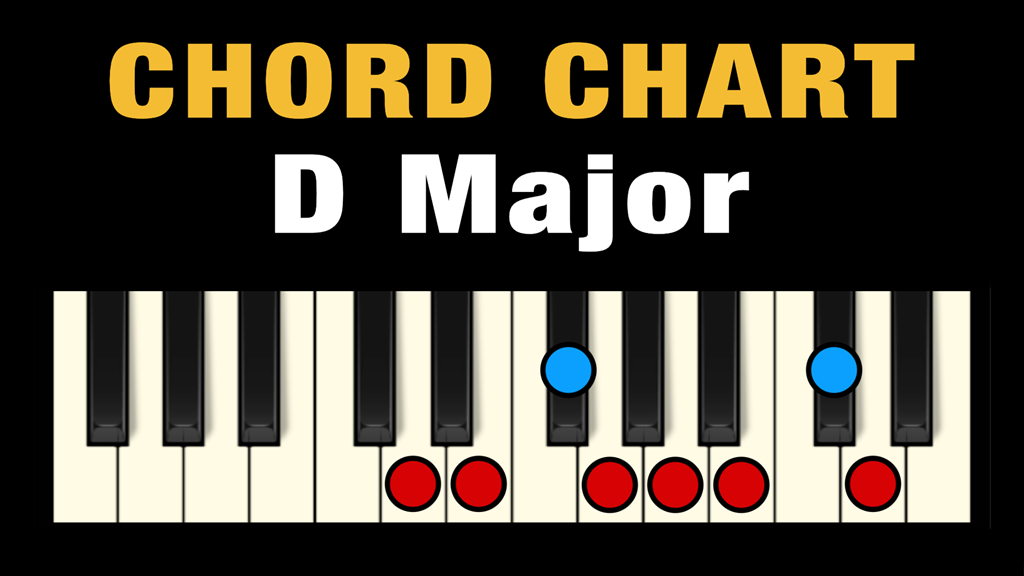
When playing songs or improvising on piano, the D# chord typically appears alongside certain other chords that complement it harmonically. Some common chord pairings you’ll come across frequently include:
D# and A# minor: The relative minor of D# major creating a vibrant I-vi chord progression. For example D#-A#m-D#-G# sounds uplifting.
D# and G# minor: The vi chord or submediant minor creates a contemplative mood when alternating D#-G#m-A#-F#.
D# and E major: Smooth voiceleading between these two major chords makes them work well together. Try D#-E-F#-A#.
D# and B major: The V or dominant chord pulls strongly back to the I chord (D#), giving a bright bluesy feel as in D#-A#-B-D#.
D# and F# minor: The ii or supertonic minor helps lead back to the tonic D# chord nicely. Example D#-G#-F#m-E.
D# and C# minor: A common i-iv minor key progression sounding introspective and pensive. For instance C#m-F#m-D#-A#.
Listen for these and other D# chord combinations across different genres of music. Understanding how chords relate will make you much more adept at the piano.
Advanced Tips and Exercises for Polishing D# Chord Skills
Once you’ve acquired basic proficiency playing the D# chord, you can refine your technique even further with some more advanced training tips:
- Practice playing the D# chord in contrary motion. For example, play a D# triad with your right hand while playing an A# minor triad with your left hand. This builds coordination.
- Work on quickly inverting D# chord voicings on the fly as you play progressions. Sharpens your adaptability.
- Explore playing melody notes in one hand while simultaneously accompanying with a D# chord in the other hand. Develops independence.
- Take specific chord transition combinations like D#-G# and run them back and forth smoothly at faster tempos. Hones accuracy.
- Learn some jazz standards like “On Green Dolphin Street” which move between D# and difficult chords quickly. Challenges your changes.
- Look into advanced D# chord alterations like D#7b9 and D#7#9 used in genres like jazz and fusion. Broadens your harmonic colors.
- Practice improvising melodies and basslines over a D# chord vamp to deeply internalize its sound. Aids chord/scale relationships.
Drilling these types of focused exercises will refine your D# chord prowess, taking your piano playing to a higher level. But always remember to balance them with simply enjoying making music!
Common Voicings for D# Chord Inversions
When playing piano, a voicing refers to the specific arrangement of notes within a chord. There are various voicing options for inverting the D# major triad while keeping its characteristic sound. Here are some useful examples:
Closed voicing: Notes are clustered close together, usually within an octave. For a D# chord try:
D# F## A#
Open voicing: Notes are spread out over more than an octave. For D#chord:
D# F## (up one octave) A#
Rootless voicing: The root note D# is omitted, usually to avoid muddiness in lower registers. For example:
A# F##
Quartal voicing: Uses the interval of a perfect 4th between notes instead of 3rds. For D# chord:
D# G# C#
Spread voicing: Doubles notes across three octaves for a wide, full sound. For instance:
D# F## A# (down one octave) D#
Experiment with these and other D# chord possibilities. Finding effective voicings expands your musical arrangements and accompaniment skills. Listen closely and let your ear guide you.
How to Use the D# Chord Creatively in Songwriting
The D# major chord has a distinctly bright, uplifting sound that can be utilized creatively when writing original songs and music:
- Try modulating from the key of A major up to D# major for a big, bold chorus or melodic lift. The key change to D# will feel energizing.
- Rock and blues songs often incorporate quick turnarounds between D# and E chords, like the classic I-♭VII progression. Use this to build intensity or momentum.
- Resolving a G# dominant 7th chord to D# major creates powerful tension and release. Use this V-I cadence for impact.
- Inserting unexpected D# major chords into progressions with darker minor chords (D# – F#m – C#m for example) adds nice contrast.
- The D# major arpeggio has a cascading, flowing character perfect for ornamenting melodies. Highlight it in intros or interludes.
- A simple alternating D# – E chord vamp is bold and driving. Great for building energy in verse sections behind vocals.
- Ending a song with a D# or D#7 chord leaves listeners with an uplifted, bright feeling. Use it to provide closure.
Keep exploring creative ways to utilize the distinct sound of D# major in your own compositions. Listen to how hit songs employ the chord as inspiration for your writing.
How to Self-Teach More Chords Like D# Major On Your Own
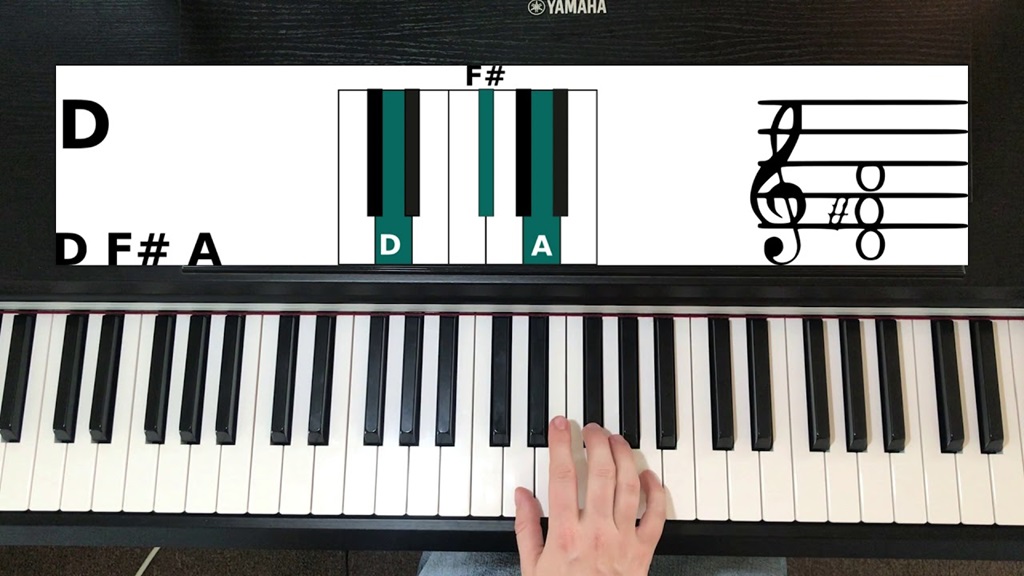
The tips and techniques covered in this guide can serve as a template for self-teaching any new chords you want to learn on piano. Here’s a step-by-step process you can use to methodically master additional chords:
- Identify the new chord symbol you want to learn such as F, A♭ or E♭. Look up the notes contained in the chord if needed.
- Find those notes on your keyboard. Get comfortable playing the notes together in the right hand to learn the basic chord shape.
- Add inversions, trying the notes of the chord in different bass note arrangements. Start with root position, then first inversion, etc.
- Look up any alternative voicings for the chord and try them, like open vs. closed position or without the root.
- Practice switching smoothly between your new chord and other easy chords you know in simple progressions.
- Research songs that feature the chord prominently and learn them to hear the chord’s role. Analyze its qualities.
- Improvise your own chord progressions, melodies, and basslines using your new chord to reinforce how it can be applied musically.
- Explore variations like 7ths, extensions, and altered chord tones to expand your grasp beyond basic triads.
Conclusion
Learning to play the D# piano chord is an exciting milestone in your piano journey! Approaching the D# major chord methodically, from understanding its note construction to practicing inversions and voicings, ensures you gain mastery.
Include the chord in songs and progressions to make it musical. Extend your knowledge by exploring chord extensions for richer harmonic colors. Most importantly, be patient with consistent daily practice. Implementing the techniques covered in this guide will give you skills to tackle any new chord. Keep your learning focused and have fun expanding your musical vocabulary one chord at a time!
FAQs
-
Why is the D# chord so important to learn on piano?
The D# major chord is one of the most common and useful chords across many genres of music. Learning to play D# major comfortably helps train dexterity, strength, and coordination in both hands. It also builds an intuitive understanding of major chord construction that transfers to learning other chords.
-
How can I get better at switching quickly between a D# chord and other chords?
Using a metronome on a slow tempo and incrementally increasing speed as you get accurate is hugely helpful. Drill challenging chord changes like D# to E major over and over. Practice different D# chord inversions and voicings. Master the smooth transition between chords through muscle memory.
-
Is there an easy way to memorize the notes in a D# chord?
Associating the note names with their placement on the keyboard helps cement them. Saying the notes out loud when playing the chord is also effective. Breaking the chord into smaller shapes/patterns can make it less intimidating. Relate it to other chords you already know like D major.
-
Should I learn all the extended chords like 9ths and 13ths right away?
It’s best to start with basic major, minor, and dominant 7th chords first. Get those chord types under your fingers and work on chord progressions. Once comfortable, experiment with extensions like D#maj9 or D#13 to broaden your harmonic knowledge.
-
What songs use the D# chord prominently?
Some well-known examples are “Tears in Heaven” by Eric Clapton, “Unchained Melody” by the Righteous Brothers, “November Rain” by Guns N’ Roses, “Moondance” by Van Morrison, and “Hallelujah” by Leonard Cohen. Learning to play songs with featured D# chords helps reinforce proper technique.
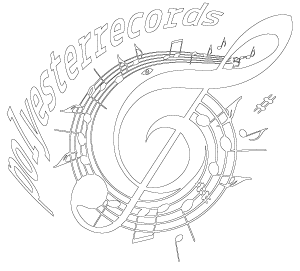
Sorry, the comment form is closed at this time.